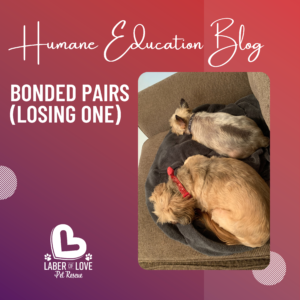
In Part 1, we discussed how separation anxiety is a medical condition characterized by distress behaviors when dogs are separated from their family. Now, let’s explore evidence-based treatment approaches recommended by veterinary behaviorists to help your dog overcome this challenging condition.
Looking online, you may find a wide variety of recommendations and it can be difficult to evaluate their effectiveness. Everyone has a story of a dog that improved with “XYZ” — and maybe that’s true, but we should look for science based techniques that help the vast majority of dogs, not just the one off thing.
When evaluating this information, you should always avoid:
- Punishment or “tough love” methods: These increase anxiety and fear, potentially worsening the condition and damaging the human-animal bond. Forcing a dog to “get used to it” through extended separations can cause significant psychological distress and worsen the condition.
- Extended exercise before departure: While appropriate exercise is important for overall wellbeing, the belief that “a tired dog won’t be anxious” is not supported by research.
- Getting another pet: Research shows this rarely resolves separation anxiety as the attachment is to the human caregiver and not a result of boredom.
A Multimodal Approach
There is no one size fits all treatment for separation anxiety. Treatment requires a comprehensive strategy with multiple facets — a “multimodal” approach — each of them backed by science and professional expertise.
- Evidence-based behavior modification
- Environmental management
- Psychotropic medications
- Professional guidance
A Realistic Timeline
We should also establish realistic timelines for these pets — again, this is a medical condition. Many dogs show improvement within 2-4 months, though some dogs may not. Improvement is gradual and requires consistent treatment monitoring even after improvement, likely for life.
Evidence-based Behavior Modification
Rather than “dominance” or “leadership” approaches promoted by some non-credentialed trainers, the foundation of separation anxiety treatment is systematic desensitization combined with counterconditioning:
- Systematic desensitization: Gradually exposing the dog to very brief periods of separation that don’t trigger anxiety, then slowly increasing duration as the dog shows comfort.
- Counterconditioning: Creating positive associations with previously fear-inducing situations.
Departure Cue Desensitization: Veterinary behaviorists recognize that dogs with separation anxiety often become distressed at pre-departure cues (picking up keys, putting on shoes). Treatment involves performing these actions repeatedly without leaving, gradually desensitizing the dog to these triggers.
Gradual Separation Protocol: This must be implemented extremely gradually, often beginning with durations of just seconds. It is critical to not progress to longer separations until the dog shows no signs of anxiety at the current level. Video recording during absences is considered essential for accurate assessment. This process can be excruciatingly slow and even seem over the top! It’s your best chance of success.
Environmental Modification
Evidence-based environmental management includes:
- Creating a predictable environment and schedule that minimizes anxiety triggers.
- Providing appropriate cognitive enrichment through food-dispensing puzzles and safe chew items.
- Using scientifically validated products like pheromone diffusers (Adaptil) or specific auditory enrichment designed for canine anxiety like Through A Dog’s Ear music or even white noise.
- Carefully considering confinement—for many dogs with separation anxiety, crating can significantly increase distress and is counterproductive.
- Window access should be limited where feasible.
- Arrange for qualified pet sitters or doggy daycare facilities if your dog would do well in these circumstances.
- Utilize remote veterinary consultations for monitoring and plan adjustments to minimize veterinary office stress.
- Consider temporary adjustments to work schedules when possible.
- Avoid leaving the dog alone beyond their current comfort threshold as determined by your treatment plan wherever possible.
Psychotropic Medications
While people are often anxious about the possibility of medicating their dog, the benefits significantly outweigh the risks in the vast majority of patients. We should remember that these dogs have physical and chemical changes in their brain. Medication helps improve these changes. Also, we should remember that these dogs are suffering — medication is a humane way to help improve a dog’s quality of life. First-line medications like fluoxetine and clomipramine have strong evidence supporting their efficacy in canine separation anxiety. They may be enough, but there can also be adjunctive medications used like trazodone or gabapentin. Despite a wide variety of unregulated and unreviewed claims, the vast majority of calming supplements available are no more effective than a placebo sugar pill.
Medication protocols typically require 4-8 weeks for optimal effect, with regular monitoring and potential adjustments by your veterinarian. A premature discontinuation of medication is a common cause of relapse.
Professional Guidance
All of this should be done in consultation with a professional.
- Consultation with a board-certified veterinary behaviorist (Diplomate of the American College of Veterinary Behaviorists) – while limited in Ohio, they are available. Telemedicine consultations are also available either directly or, more typically, through your veterinarian.
- If a board-certified specialist is not available, working with a veterinarian who has additional training in behavioral medicine.
- Caution regarding trainers who lack appropriate credentials—look for certification from organizations that require education in learning theory and evidence-based methods, such as certified professional dog trainers (CPDT).
Ken Brunson DVM, Board Member










































